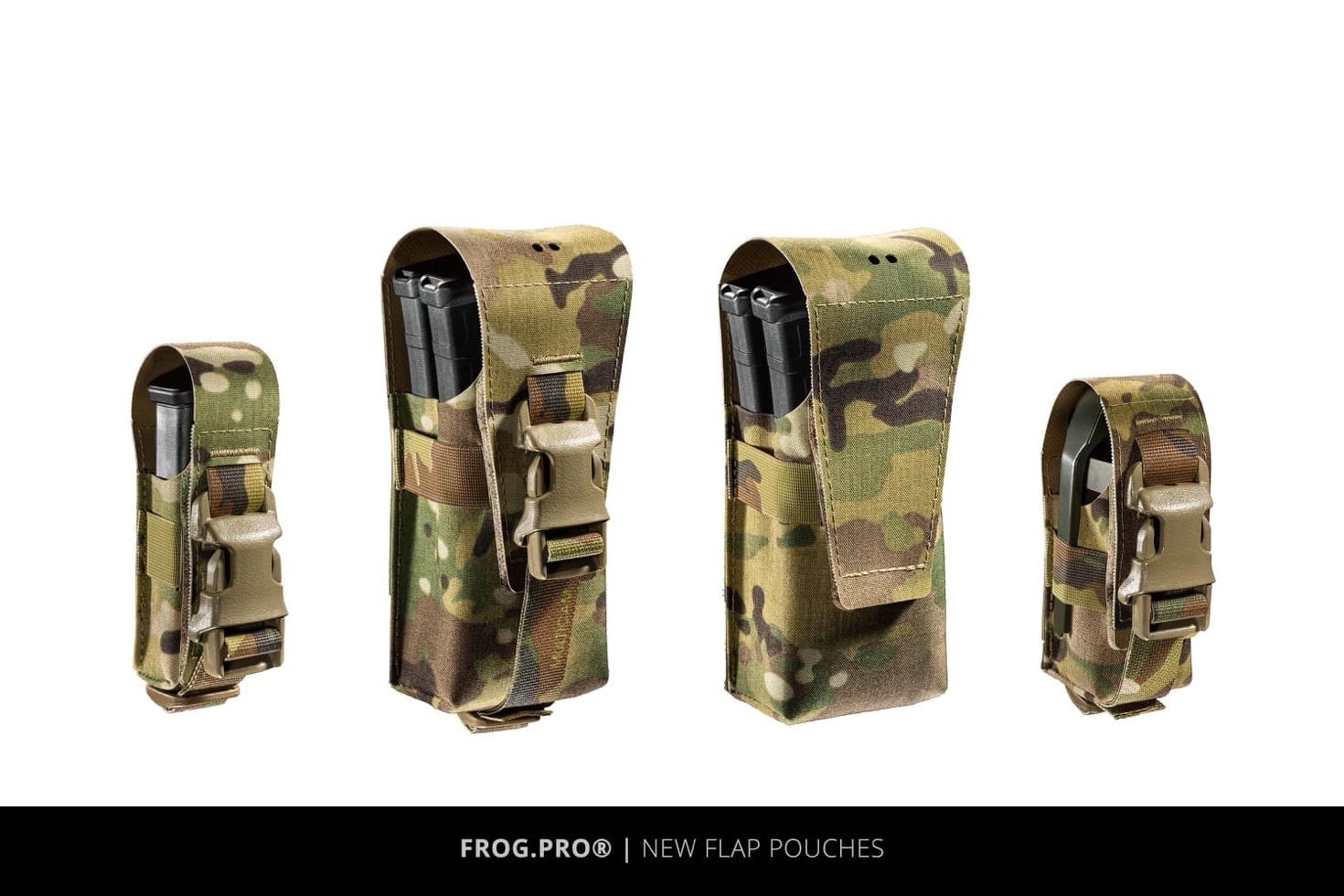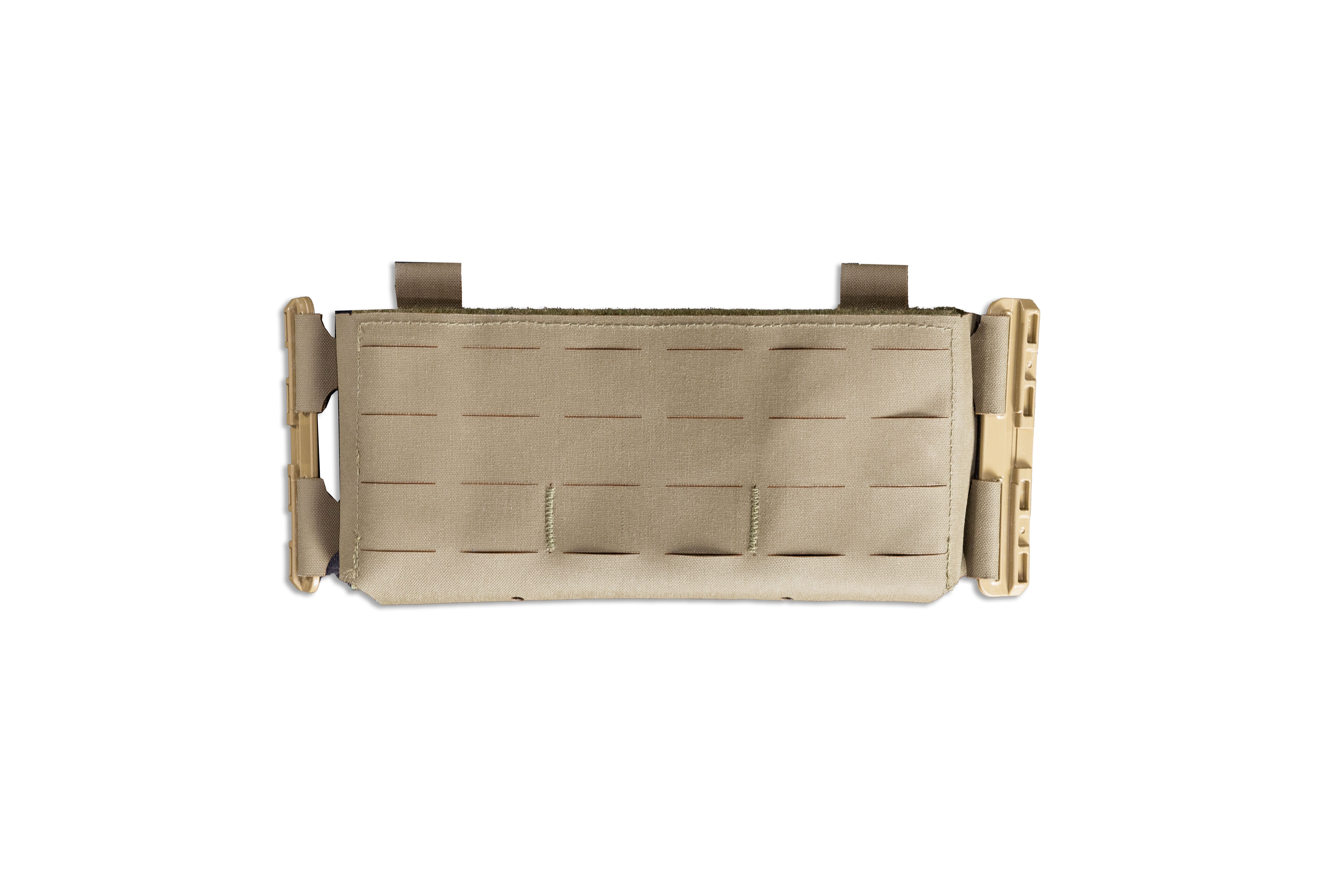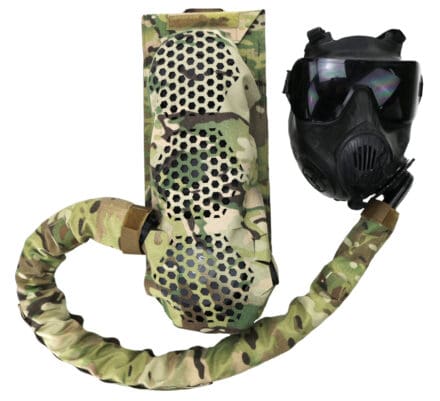(GATTATICO (RE) – ITALY) – FROG.PRO®, the Italian reference brand for tactical tailoring, is finally ready to launch its new pouches. They will be available on their website starting from today May 9th 2025.
“At FROG.PRO, our mission has always been clear: deliver high-performance tactical gear that professionals can trust in any operational environment. Today, we are proud to unveil two new lines of pouches designed to meet the demands of modern military and law enforcement users across the globe.
FAST Line: speed and control in every movement.

The FAST line is engineered for those who operate under pressure and require lightning-fast access to their gear. These magazine pouches use elastic retention combined with an ergonomically designed high-grip puller, allowing quick and precise magazine extraction even in high stress scenarios.
Operators can further customize their setup by swapping the standard puller with a rubberized, enhanced grip variant, perfect for wet, muddy, or maritime conditions.
The FAST line represents a leap forward in rapid access design, ensuring users are always one step ahead.
FLAP Line: maximum retention, maximum protection.

When retention and protection are the priorities, the FLAP line delivers. These pouches feature a protective flap closure with velcro and/or buckle, offering added security and shielding from environmental factors like rain, mud, and debris.
This line includes pouches for:
• Rifle magazines
• Pistol and SMG magazines
• Grenades
Each magazine pouch includes a Tegris insert that maintains structural integrity and facilitates smooth reinsertion of the magazine, ensuring that even under stress, performance is never compromised. Drainage holes at the base prevent water buildup, supporting use in maritime and amphibious operations.
Expanded radio carry capabilities.

With communication being mission critical, FROG.PRO has also developed three new radio pouches:
• AN/PRC Radio Pouch: Built for rugged military radios, with maximum durability and accessibility;
• Medium Radio Pouch: Ideal for police departments using medium-sized comms;
• Small Radio Pouch: Compact and low-profile for law enforcement or special duties with smaller radios.
Built with purpose: modularity, lightweight, and mission durability.
All new pouches are crafted from mil-spec LAHYCO, a composite fabric that is:
• Water repellent
• Flame Resistant
• NIR – Compliant
Fully molle compatible and modular, these pouches are designed to integrate seamlessly into a wide range of setups, chest rigs, belts, and plate carriers alike.
Handmade in Italy by skilled craftsmen, these products reflect FROG.PRO’s commitment to quality, performance, and innovation.
Mission-Ready, World-Proven.
Whether you’re conducting long range patrols in arid environments or engaging in CQB operations in complex terrain, these new pouch lines offer:
• Lightweight construction
• Extreme durability
• Maximum versatility
Available in MultiCam, Ranger Green, Coyote 498, and Black, they’re ready to serve professionals “wherever duty calls.”
Ready to upgrade your loadout? The new pouches are already available on www.frogpro.eu.
They offer free shipping to USA on orders over 200 EURO (about 220 USD).
































































































































